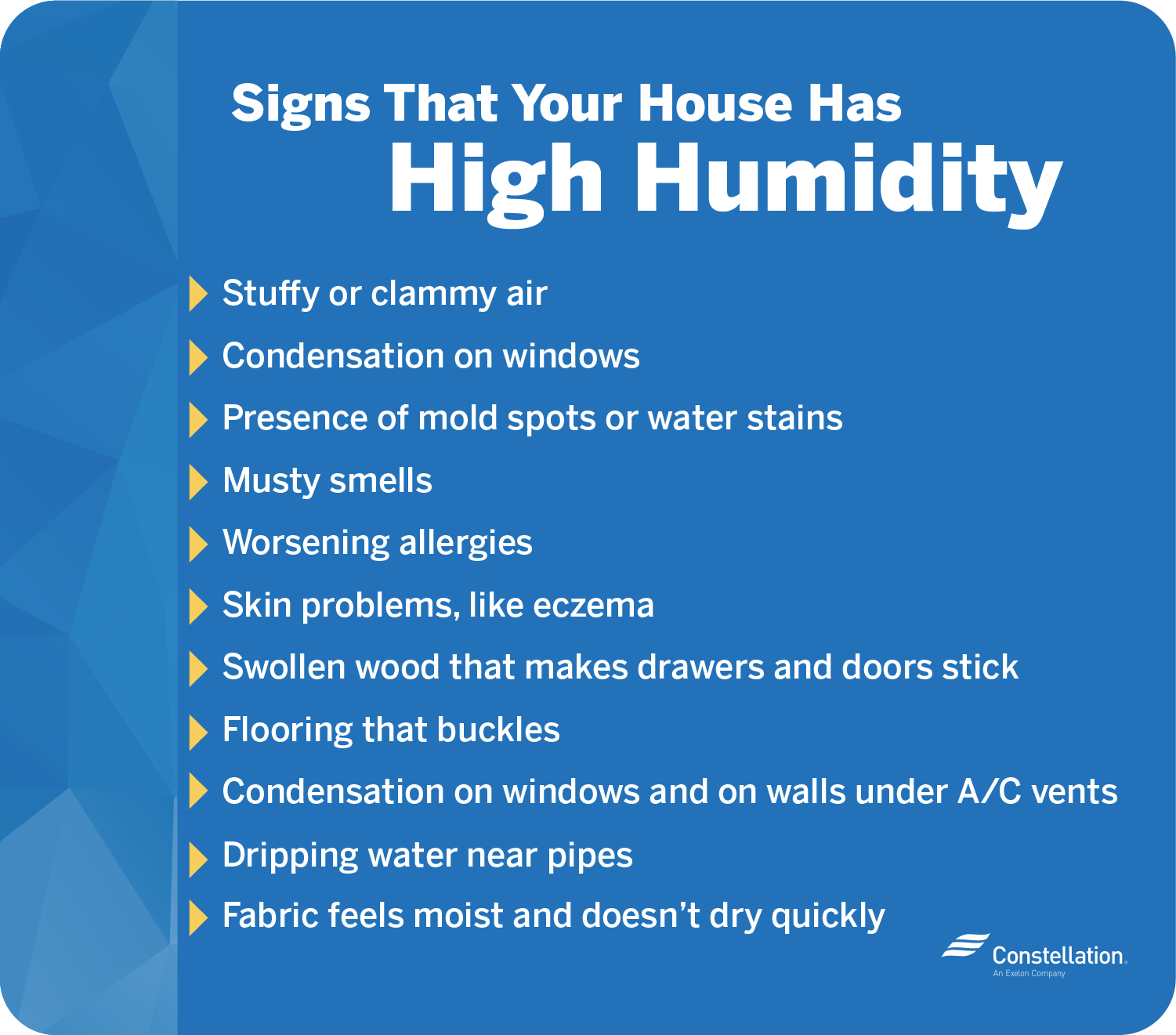Table Of Content
Persistent condensation may contribute to mold growth and damage to affected surfaces. Recognizing and addressing condensation is crucial in maintaining a comfortable indoor environment. When you’re cooking, showering or doing any other activity that introduces heat into your home, be sure to use your exhaust or ventilation fans in order to increase airflow and decrease humidity. If you don’t have exhaust or ventilation fans, consider having them installed in the more humidity-prone parts of your house. If you notice any of these signs, it is important to take action to reduce the humidity levels in your home. If you don’t feel comfortable with this, contact an HVAC professional to help you figure out the best option for your home.
Home Damage
Figuring out how to reduce humidity in a room naturally can be as easy as opening up the windows. Even if it is very humid outside, opening windows allows for more airflow and ventilation, directing more humid air out of the house. Opening the windows also lets in more natural sunlight, which can help to dry out moist air. However, if the house is more humid inside than the air outside, opening the windows isn’t likely to help.
Solved! This Is Your Home’s Ideal Indoor Humidity Level
Take advantage of an unseasonably warm winter day to open the windows, if only for a brief time. Particularly if it’s rained recently, the fresh air will bring some humidity into your home. A portable steamer provides an easy way to remove wrinkles from clothing and curtains while also adding moisture to the air.
Run Your Exhaust Fans
Give it a smell, and if it smells musty or damp, you can either get it dry-cleaned or simply replace it. Efficient air circulation throughout the room is necessary to lower humidity. This article will break down over ten ways to lower the humidity in your home without needing to purchase a dehumidifier.
It’s hard to get comfortable when you breathe moist air, and it can be dangerous if you have respiratory problems. Luckily, there are several simple ways to lower humidity in your home. An improperly-sized AC unit can also contribute to the humidity problem—an air conditioning system that’s too big, for example, will cool the air too quickly without removing enough moisture. Wet soil around your home’s foundation or abutting against a crawl space contributes to indoor humidity. Placing a thick plastic sheet between the earth and your home or crawl space will eliminate the issue.
Effects of High Humidity in Winter
Humidity levels above 50 percent can breed dust mites, mildew, and mold, triggering allergies or other health problems.Dust mites love to burrow into your mattress. And mold can damage the surfaces that it grows on, which can be almost anything from ceilings, walls, and floors to even clothing. Mildew prefers places where moisture is high, like bathroom walls and windowsills. Luckily, there are some alternative things you can do to dehumidify your home, and keep moisture levels down. These simple things are a quick and inexpensive solution to preventing humidity build-up, and dampness. So, whether it’s improving air flow to adding plants in your living spaces, here are some ways to reduce humidity in your home without a dehumidifier.
Optimal humidity is good for your health, aids sleep, and promotes daytime mental alertness. You will also breathe easier with a respiratory illness like asthma or allergies. Mary H.J. Farrell is a senior editor at Consumer Reports whose real passion is for cooking and all that entails. She has expanded CR’s cookware category to include not only more pots and pans but also other essentials like stand mixer attachments, sheet pans, and vacuum sealers. Mary also covers vacuums but finds cooking way more fun than cleaning.
Keep air conditioner filters clean
Handyman: Lower humidity at home for summer comfort - Detroit News
Handyman: Lower humidity at home for summer comfort.
Posted: Thu, 13 Jul 2017 07:00:00 GMT [source]
"If your gutters are not draining properly around your home, you can have increased humidity around your foundation walls," says Martin. In addition to keeping them clean, you also want to ensure your gutters are working correctly—water should always be directed away from your home's foundation. When wondering how to reduce humidity, one of the easiest and most effective solutions is to use a dehumidifier.

Also, keep all interior doors open to facilitate air circulation. The good thing is, these desiccants can be reused by drying them up in a warm place to remove stored moisture, and putting them back in humid areas. These are handy to get rid of excess moisture and reduce mold growth. A good tip is to always keep surfaces dry at all times, by wiping down kitchen and bathroom surfaces after use. This will prevent hot, evaporating water from accumulating in the air. While we may use houseplants to decorate our homes, plants are also a natural way to dehumidify your home.
Reducing indoor relative humidity can improve the circulation and cardiorespiratory health of older people in a cold ... - ScienceDirect.com
Reducing indoor relative humidity can improve the circulation and cardiorespiratory health of older people in a cold ....
Posted: Fri, 15 Apr 2022 07:00:00 GMT [source]
You may already know that heating a home can decrease relative humidity levels. However, on a hot summer day, the home’s air conditioner can help with humidity control. An air conditioner pulls air in the home over an evaporator coil containing refrigerant.
By following these tips, you can reduce the humidity in your house by improving your air circulation without using a dehumidifier. It’s important to lower the indoor humidity if you have any excess moisture in your home. Homeowners who live in a climate with excessive rain will want to ensure that gutters and downspouts work correctly and rainwater is directed away from the house to keep moisture out.
And now you’ve officially gotten to the good part—how to fix these issues for good. And unfortunately, there are holes and leaks in your house’s thermal boundary—lots of them. A house has a few important jobs, but one of the most important is keeping the weather outside from getting inside. But depending on where you live, with Sealed you can get home upgrades that that fix these problems—and at no upfront cost, too. There are plenty of potential causes of moisture issues in your home, but reading about those usually isn’t very helpful for troubleshooting.
Turn on your oven and bathroom fans to promote air circulation and filtration. Another contraption that can help in the fight against indoor humidity is a handy dandy DampRid moisture absorber. This disposable, hanging bag traps moisture, preventing stale, musty smells and leading to fresher air. It’s especially ideal for small or closed-in spaces like closets where there’s minimal air flow.

No comments:
Post a Comment